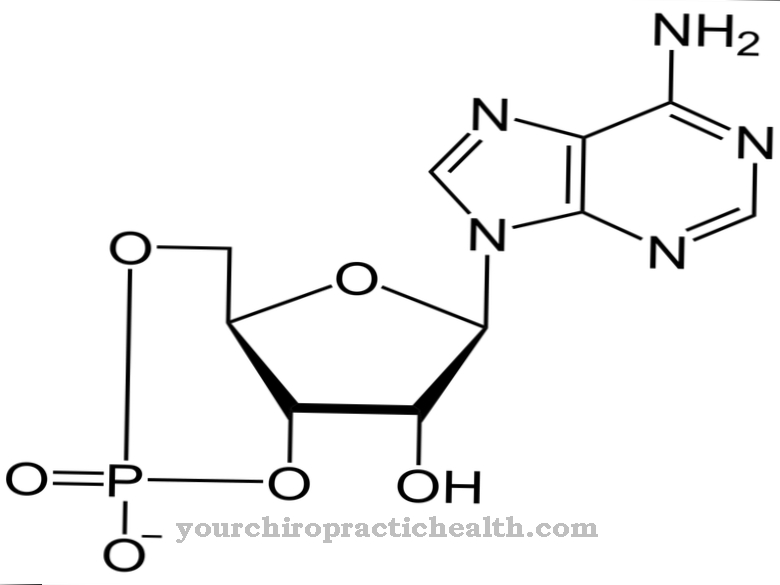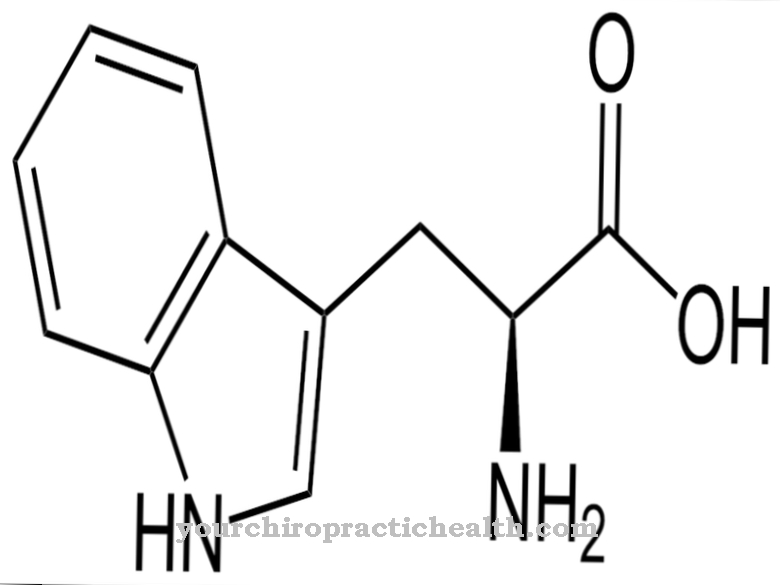The Blood lipid levels provide information about the concentration of cholesterol in the blood. Cholesterol is a vital substance as it occurs in all cell membranes in the human body. Too high a concentration can lead to health problems, in the worst case to a stroke.
What are blood lipid levels?

When analyzing the Blood fat the concentrations of total cholesterol, LDL cholesterol, HDL cholesterol and triglycerides are measured. LDL cholesterol is also known as the "bad cholesterol" because its value represents the actual risk factor for many vascular diseases.
In contrast, HDL cholesterol is more of a protective factor and is therefore often called “good cholesterol”. The abbreviation LDL stands for "Low Density Lipoprotein", ie for lipoproteins with low density, while HDL stands for "High Density Lipoprotein", ie lipoproteins with high density. To put it simply, lipoproteins are compositions of fat and protein particles that are responsible for the transport of water-insoluble fats and cholesterol in the blood.
LDL ensure that cholesterol, which is produced by the body itself, is transported from the liver to the tissues, while HDL are responsible for the cholesterol metabolism. This means that the excess cholesterol is transported from the HDL to the liver and thus protects the organism against vascular diseases.
Measure & examine blood lipid values (healthy & diseased blood lipid values)
Blood is drawn from the patient to analyze the cholesterol levels. Important for the exact determination of the Blood lipid levels is that you have not eaten or drunk coffee or milk for 12 to 14 hours before the blood draw, as blood lipid levels can be increased after a meal.
It is also important that the patient has not consumed any alcoholic beverages for at least three days before the blood test. Physical exertion should not have occurred until a few hours before the blood sample is taken, because this also modifies the measured values.
The level of blood lipid levels depends heavily on the gender and age of the person tested. The values reflect lifestyle habits, but also hereditary predispositions.
There are different units of measurement in different areas of Germany. In the west, the values are given in mg / dl (milligrams per deciliter), in the east the unit used in English-speaking countries is mmol / l (millimole per liter). 1 mmol / l corresponds to 38.67 mg / dl, 1 mg / dl is 0.02586 mmol / l. In Germany, the average cholesterol level of people between 35 and 65 years, regardless of gender, is around 236 mg / dl or 6.1 mmol / l). Most people, around 70 percent, have a value between 190 and 280 mg / dl.
Diseases & Disorders
The determination of the cholesterol level is necessary to determine the risk of a blood vessel disease. When diagnosing diseases such as arteriosclerosis (calcification of the arteries), angina pectoris (also heart attack) and apoplexy (stroke or stroke), circulatory disorders of the limbs and kidney damage, the cholesterol levels play a major role.
The main risk here is LDL cholesterol. The blood lipid levels are determined in order to assess the risk of calcification of the vessels (risk of arteriosclerosis) or the risk of a heart attack. In addition, the HDL and LDL values are measured as a control during a medically induced fat-lowering therapy.
The blood lipid levels increase (see also Increased blood lipid levels) among other things as a result of certain diseases, such as hypothyroidism, diabetes, chronic kidney failure, biliary congestion, pituitary growth hormone and liver disease. Elevated liver values are related to certain lifestyle habits. These include obesity and anorexia. Certain medications, such as cortisone, androgens (hormones), some beta blockers, cyclosporine, and diuretics, can also increase blood lipid levels.
The most common type of cholesterol disease is polygenic hypercholesterolemia. A cholesterol increase of more than 200 mg / dl falls into this category. People under the age of 55 are particularly at risk of having a heart attack if they have hypercholesterolemia. Effective preventive measures against an increased cholesterol level are long-term maintenance of normal weight or the reduction of body weight as well as sporting activities or generally a lot of exercise in the fresh air.
In addition, there is a diet in which attention should be paid to nutrients that are low in cholesterol, low in fat and high in fiber. In critical cases, elevated blood lipid levels can be treated with drugs that lower cholesterol.













.jpg)

.jpg)
.jpg)











.jpg)